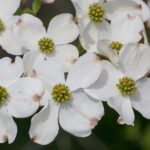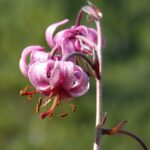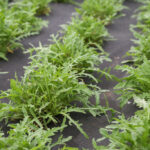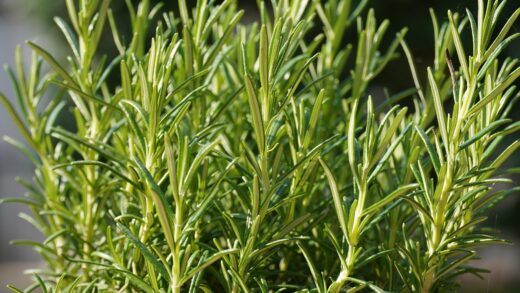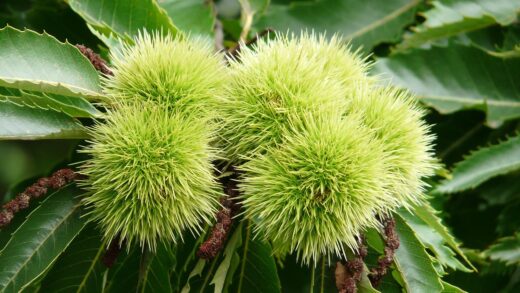Diseases and pests of the cornflower
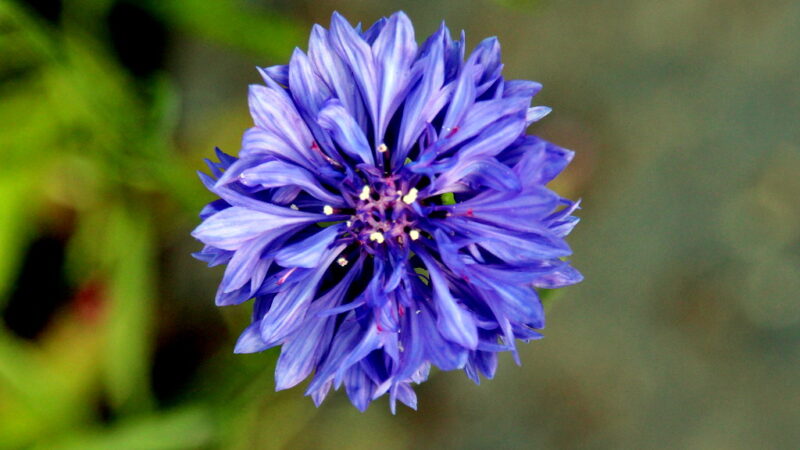
While cornflowers are generally regarded as robust and low-maintenance plants, they are not entirely immune to the challenges posed by various diseases and pests. A proactive approach to garden hygiene and plant health is the most effective strategy for preventing and managing these potential issues. Understanding the specific threats that can affect Centaurea cyanus, recognizing their early symptoms, and implementing timely and appropriate control measures are crucial for maintaining a thriving and beautiful display. Most problems can be effectively mitigated through good cultural practices that promote strong, resilient plants less susceptible to attack.
The most common diseases that affect cornflowers are fungal in nature, thriving in the warm, humid conditions that can occur during the peak of the growing season. Powdery mildew and rust are two of the most frequently encountered fungal pathogens. Powdery mildew appears as a distinctive white, dusty coating on the surfaces of leaves, stems, and sometimes flower buds. Rust, on the other hand, manifests as small, reddish-brown pustules, typically on the undersides of the leaves. Both of these diseases can reduce the plant’s photosynthetic capacity, weaken its overall health, and diminish its aesthetic value.
Effective prevention of these fungal diseases begins with providing the right growing conditions. Proper spacing between plants is paramount as it ensures good air circulation, which helps to keep the foliage dry and less hospitable to fungal spores. Planting in a location with full sun also helps to burn off morning dew and moisture from rain more quickly. Furthermore, watering practices should focus on delivering water directly to the soil at the base of the plant, avoiding wetting the leaves whenever possible, especially in the evening.
In terms of pest pressures, cornflowers can occasionally attract sap-sucking insects, with aphids being the most common culprit. These small insects tend to cluster on the tender new growth and flower buds, feeding on the plant’s juices. A heavy infestation can lead to distorted growth, yellowing leaves, and a general decline in the plant’s vigor. Aphids also excrete a sticky substance known as honeydew, which can in turn promote the growth of sooty mold, further stressing the plant. Regular inspection is key to catching these infestations early.
Common fungal diseases
Powdery mildew is arguably the most recognizable fungal disease to affect cornflowers. It is caused by a variety of different fungal species and is favored by high humidity at night and drier conditions during the day. Unlike many other fungi, it does not require free-standing water on the leaf surface to germinate. The characteristic white, powdery growth can eventually cover large areas of the plant, impeding its ability to perform photosynthesis and leading to premature leaf drop and a reduction in flowering.
More articles on this topic
To manage powdery mildew, preventative measures are most effective. If the disease does appear, the first step is to remove and destroy all infected plant parts to reduce the source of fungal spores. For minor infections, organic treatments can be quite successful. A spray made from a solution of potassium bicarbonate or neem oil can help to control its spread. These treatments work by altering the pH of the leaf surface or by acting as an anti-feedant and disrupting the fungus’s life cycle.
Rust is another fungal disease that can be problematic. It presents as small, raised, orange or reddish-brown spots, or pustules, on the undersides of the leaves. These pustules contain the spores that can spread the infection to other parts of the plant and to neighboring plants, often via wind or water splash. A severe infection can cause leaves to yellow and die back, significantly weakening the plant. Like powdery mildew, rust thrives in damp, humid environments.
The management of rust follows similar principles to that of powdery mildew. Ensuring good air circulation through proper spacing and pruning is essential. It is also critical to practice good garden sanitation, cleaning up fallen leaves and plant debris at the end of the season, as the fungal spores can overwinter in this material. If chemical control is deemed necessary, fungicides specifically formulated for rust can be used, but it is always best to start with less invasive cultural and organic controls first.
Key insect pests
Aphids are the most prevalent pest of cornflowers. These small, soft-bodied insects come in various colors, including green, black, and gray, and use their piercing mouthparts to suck the sap from the plant’s vascular system. They reproduce rapidly, and a small population can quickly escalate into a major infestation. The damage they cause includes stunted growth, curled and distorted leaves, and a weakened plant that is more vulnerable to other stresses.
More articles on this topic
Fortunately, there are many ways to control aphid populations. For a small number of pests, a strong jet of water from a hose is often enough to dislodge and kill them. Encouraging natural predators in the garden is a highly effective long-term strategy. Ladybugs, lacewings, and hoverflies are all voracious predators of aphids. Planting a diversity of flowering plants, including dill, fennel, and yarrow, can help to attract these beneficial insects to the garden.
If an aphid infestation becomes more severe, insecticidal soap or horticultural oil sprays are good options for control. These products work by suffocating the insects on contact and have a low impact on beneficial predators once the spray has dried. They must be applied thoroughly, ensuring complete coverage of the pests, particularly on the undersides of leaves where aphids often congregate. Multiple applications may be necessary to control successive generations of the pest.
While less common, other pests such as spider mites can occasionally be an issue, particularly in hot, dry conditions. These tiny arachnids are difficult to see with the naked eye but their presence is often indicated by fine webbing on the plant and a stippled or speckled appearance on the leaves. Spider mites also feed on plant sap, causing similar damage to aphids. Increasing humidity by misting the plants and using insecticidal soap can help to manage spider mite populations. Regular monitoring is the best defense against all potential pests.
Integrated pest management
An Integrated Pest Management (or IPM) approach is a holistic and sustainable strategy for dealing with diseases and pests in the garden. This approach prioritizes prevention and uses a combination of different control methods, resorting to chemical pesticides only as a last resort. The foundation of IPM is creating a healthy and balanced garden ecosystem where plants are naturally more resistant and pest populations are kept in check by natural predators.
The first level of an IPM strategy for cornflowers involves cultural controls. This includes all the good gardening practices previously mentioned: selecting a sunny, well-drained site, preparing the soil properly, ensuring adequate spacing for air circulation, and using appropriate watering techniques. These practices create strong, healthy plants that are inherently less susceptible to attack from both pathogens and insects. A vigorous plant is its own best defense.
The next level of IPM involves physical and mechanical controls. This can include hand-picking larger pests, using jets of water to dislodge insects like aphids, and setting up physical barriers where appropriate. For diseases, it involves promptly removing and disposing of infected plant material to prevent the spread of spores. These methods are direct and targeted, with minimal impact on the surrounding environment.
Biological control is another key component of IPM. This means actively encouraging a healthy population of beneficial insects, birds, and other organisms that prey on garden pests. Planting a variety of nectar- and pollen-rich flowers will attract ladybugs, lacewings, parasitic wasps, and other allies that help to maintain a natural balance. By fostering this biodiversity, the gardener can significantly reduce the need for any form of intervention. When all else fails, the IPM approach advocates for the use of the least toxic chemical controls available, such as horticultural oils or insecticidal soaps.
Environmental stress factors
It is important to recognize that not all plant problems are caused by diseases or pests. Sometimes, symptoms that appear to indicate an infection or infestation are actually the result of environmental, or abiotic, stress. These factors can include improper watering, nutrient deficiencies, soil compaction, extreme temperatures, or incorrect light levels. Accurately diagnosing the root cause of a problem is essential for applying the correct remedy.
For example, wilting is a common symptom that gardeners often associate with disease. However, in many cases, it is simply a sign of either underwatering or overwatering. Before applying a fungicide, it is crucial to check the soil moisture levels. Similarly, yellowing leaves can be a symptom of a nutrient deficiency, but they can also be caused by waterlogged soil that is preventing the roots from functioning properly. A careful assessment of the growing conditions is always the first step in troubleshooting.
Leggy, weak growth with sparse flowering is rarely a disease issue. Instead, it is a classic symptom of insufficient sunlight. A cornflower planted in a shady location will stretch towards the available light, resulting in elongated, flimsy stems. The only solution for this is to ensure the plants are sited in full sun from the beginning. There is no spray or treatment that can compensate for a lack of adequate light.
Recognizing the impact of these environmental stressors is a fundamental part of preventative care. By providing the optimal growing conditions for cornflowers – full sun, well-drained soil, and appropriate moisture – the gardener can prevent a wide range of problems before they ever start. A healthy plant grown in its preferred environment is naturally resilient and better equipped to fend off any potential disease or pest pressures that may arise.
Fotó forrása: Flickr / Szerző: yrjö jyske / Licence: CC BY 2.0









